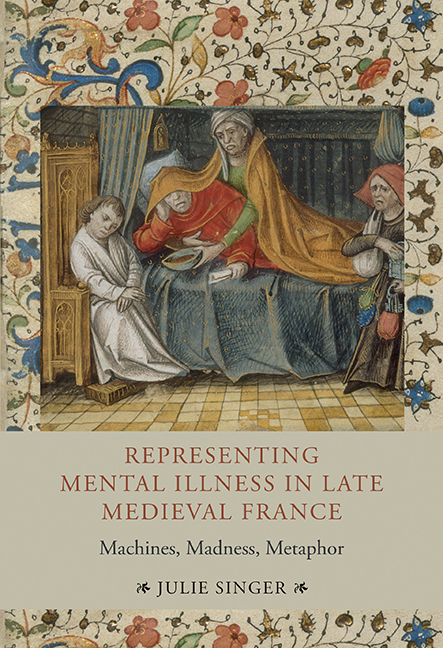Book contents
- Frontmatter
- Dedication
- Contents
- List of Illustrations
- Acknowledgements
- List of Abbreviations
- Introduction: Oxidation Before Oxygen
- 1 Of Metal and Men
- 2 Une enroullure de sapience: Instituting Princely Virtues at the Court of Charles V
- 3 Metaphors of the Body Politic
- 4 Le fer en la playe
- 5 Alain Chartier's rooil de oubliance
- Epilogue: Men Without Machines
- Bibliography
- Index
- Book part
3 - Metaphors of the Body Politic
Published online by Cambridge University Press: 15 October 2019
- Frontmatter
- Dedication
- Contents
- List of Illustrations
- Acknowledgements
- List of Abbreviations
- Introduction: Oxidation Before Oxygen
- 1 Of Metal and Men
- 2 Une enroullure de sapience: Instituting Princely Virtues at the Court of Charles V
- 3 Metaphors of the Body Politic
- 4 Le fer en la playe
- 5 Alain Chartier's rooil de oubliance
- Epilogue: Men Without Machines
- Bibliography
- Index
- Book part
Summary
“Le Moyen Âge a vécu profondément la métaphore du roi comme la tête de son royaume.”
The Middle Ages deeply lived the metaphor of the king as head of his kingdom.
In medieval political theory, it is commonplace to compare the body politic to a living human body, one whose health depends on the healthy and complementary function of all of its members. Metaphorically bringing together the “natural” body and the man-made social order, this construct gives rise to a panoply of medicalized discussions of the body politic (and even politicized discussions of human physiology). Over the course of the fourteenth century, as vernacular authors more systematically bring together political and poetic discourses, the organic construct of the body politic comes to be combined with a very different anthropomorphic political metaphor, that of Nebuchadnezzar's metal statue. Together these two metaphors create a new figure for the body politic that is at once humanoid in its anatomy and metallic in its composition. In this chapter we will trace a brief history of these two metaphors as they appear in medieval French literary culture, before turning our attention to an influential text in which the two bodies become one: Guillaume de Deguileville's Pèlerinage de l’âme. Examining Deguileville's “organic statue” and accompanying discourses on machinery, idolatry, and image-making, we will demonstrate how the “contamination” and “depersonification” of the metaphor of the body politic lays the groundwork for innovative metallic metaphors during the crisis of Charles VI's madness.
The Organic Metaphor and the Inorganic Statue
The construct now known as the “organic metaphor” of the state builds on a long tradition of political metaphors, such as the fable of the stomach and members. It reaches a full, innovative, and influential expression in John of Salisbury's Policraticus (1159), a work that “commonly receives acclaim as the first complete work of political theory written during the Latin Middle Ages.” In Books V and VI, John of Salisbury famously assimilates the body politic to a human body, with sociopolitical hierarchies mapped onto human anatomy.
- Type
- Chapter
- Information
- Representing Mental Illness in Late Medieval FranceMachines, Madness, Metaphor, pp. 121 - 172Publisher: Boydell & BrewerPrint publication year: 2018

